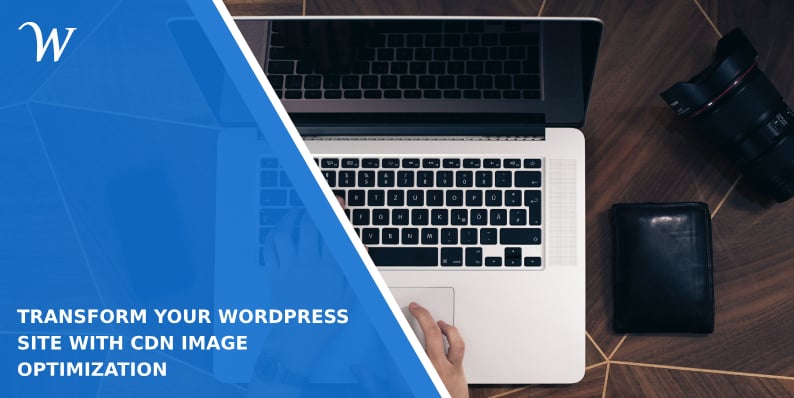Images are a crucial part of any website, especially for e-commerce stores and content-heavy sites like blogs. However, unoptimized images can significantly slow down your WordPress site and deliver a poor user experience.
Implementing CDN image optimization best practices and tools is key to overcoming this major bottleneck for WordPress performance. Here, we will tell you everything you need to know to successfully optimize images on your WordPress site.
Why Image Optimization Matters for WordPress
According to statistics from the 2021 Web Almanac report, over 95% of web pages contain images. For WordPress sites, images often make up the bulk of page weight and requests.
Unoptimized images lead to:
- Slow page load times
- High bounce rates
- Poor user experience
- Lower conversions
- Negative impact on SEO rankings
By optimizing your images with the help of a CDN, you can overcome all these issues.
Key benefits include:
- Faster load times
- Better user experience
- Higher conversions
- Improved SEO rankings
Best Practices for Optimizing Images with a CDN
When it comes to optimizing images for WordPress with a CDN, here are some best practices to follow:
1. Choose the Right CDN Provider
There are lots of CDN providers online. However, not all CDNs are created equal when it comes to image optimization. So, you need to make your choice very wisely.
Network size and distribution, performance optimization features, support quality, reliability and uptime, security protections, and pricing models are some important factors to keep in mind when selecting a CDN provider.
2. Implement Responsive Images
Responsive images automatically resize to fit the user’s screen size. This prevents blurriness, squished images, or images that overflow the container.
Using the correct width and height attributes ensures the browser allocates the proper space. The srcset attribute gives the browser multiple image file size options to choose from.
3. Compress Images
Image compression reduces file size substantially without negatively impacting visual quality. Lossless compression techniques like optimizing metadata remove unnecessary data from image files.
Applying lossy compression techniques will further reduce file size but may affect quality once certain thresholds are exceeded.
4. Convert Images to Next-Gen Formats
Converting images from JPEG and PNG to next-generation formats like WebP and AVIF can reduce size by up to 50% without affecting visual quality.
However, these formats do require browser support. A good CDN will automatically serve WebP or AVIF images to supported browsers while gracefully falling back to JPEG or PNG for non-supported browsers.
5. Lazy Load Your Images
Lazy loading defers offscreen image loading until users scroll to them. This prevents loading images users may never see.
Lazy loading can speed up load times significantly, especially on long pages with many images.
3 Best Tools for Optimizing WordPress Images with a CDN
If manually implementing all these image optimization best practices seems daunting, these three excellent tools can automate the process for you:
1. Uploadcare
Uploadcare is an excellent all-in-one solution for optimizing WordPress images with a fast CDN. This one of the most popular plugins that automatically resizes and compresses images uploaded to your Media Library for faster delivery.
It serves images from Uploadcare’s global content delivery network, which analyzes the user’s device and connection to deliver properly sized and optimized images. Additional features include automatic WebP conversion, metadata removal, and integration with the standard WordPress image editor.
You can also upload large files from various sources like social media and cloud services. There’s a generous free plan for testing, with paid plans for larger sites.
2. Optimole
Optimole is also another popular image optimization plugis. With over one million active installs, it’s easy to see why.
The plugin automatically optimizes all your images through lossless and lossy compression techniques. It also converts images to WebP when possible to unlock huge file size reductions.
Images are served from Optimole’s fast CDN, speeding up delivery. The plugin also lazy loads images for additional performance gains.
3. Shortpixel
Shortpixel is another excellent WordPress image optimization plugin to consider. Over 300,000 WordPress users actively use Shortpixel to optimize their images.
The plugin can losslessly or lossily compress your images, removing unnecessary data. It also converts images to WebP for browsers that support the next-gen format.
Shortpixel serves images from their fast CDN. Additional features like lazy loading and responsive images make this a very well-rounded solution.
Conclusion
Optimizing your WordPress images with an image CDN provides huge web performance, SEO, and conversion benefits. These are the important things you should know about image optimization.
With these image optimization best practices and leveraging excellence, you can ensure your WordPress site delivers lightning-fast images tailored to your visitors’ devices and browsers.
The result is a site that loads faster, keeps visitors engaged, fosters higher conversions, and achieves better search engine rankings through improved user experience metrics.
- How to Boost Your Casino Site’s Visibility with SEO - July 18, 2025
- What Makes Onboarding Workflow Software Effective for New Hire Processes? - February 11, 2025
- The Best Tools for SEO Analysis and Optimization - July 31, 2024
